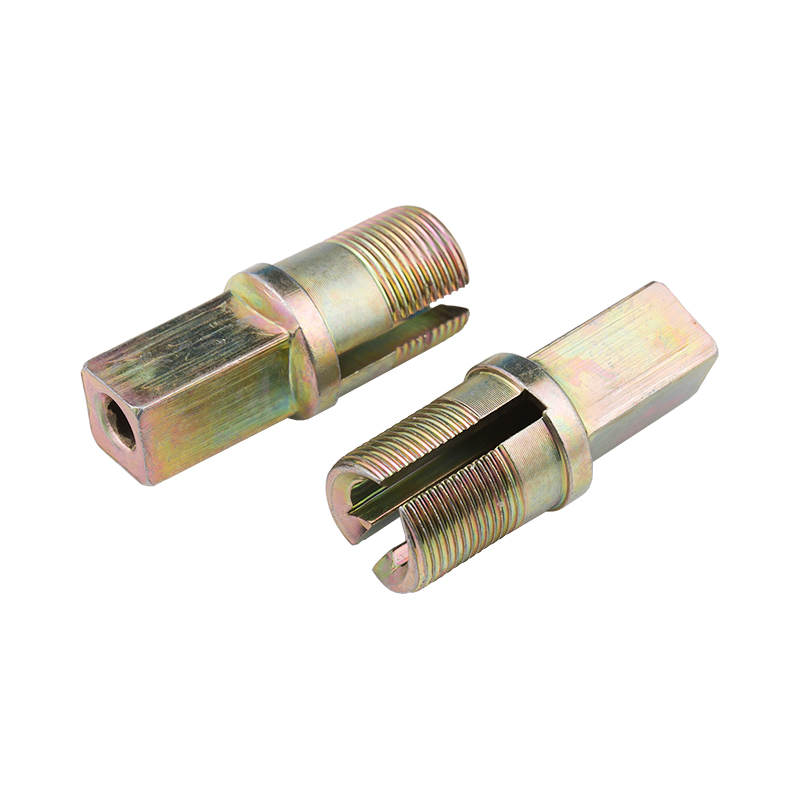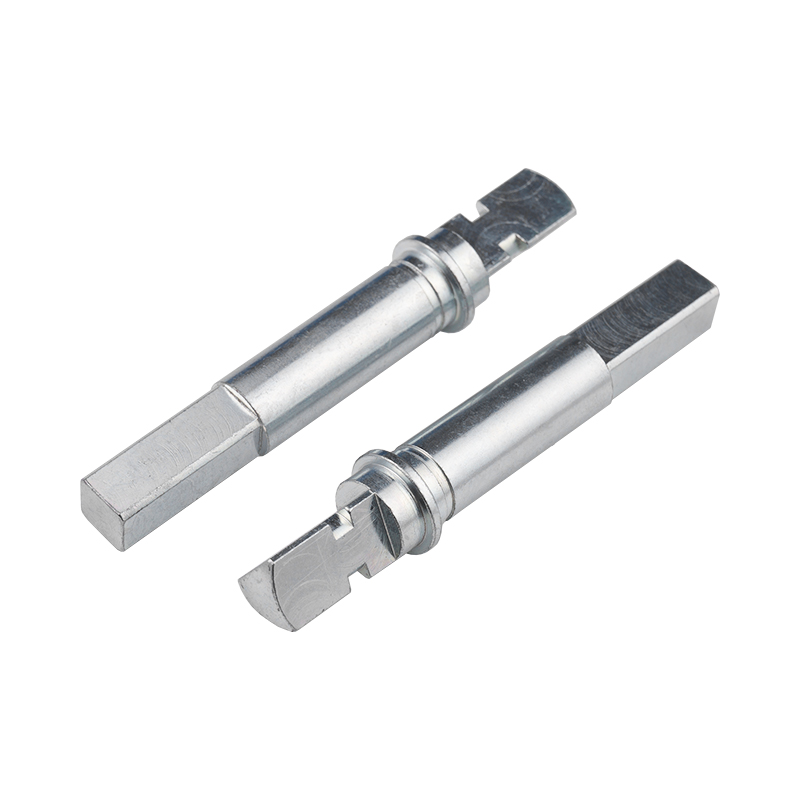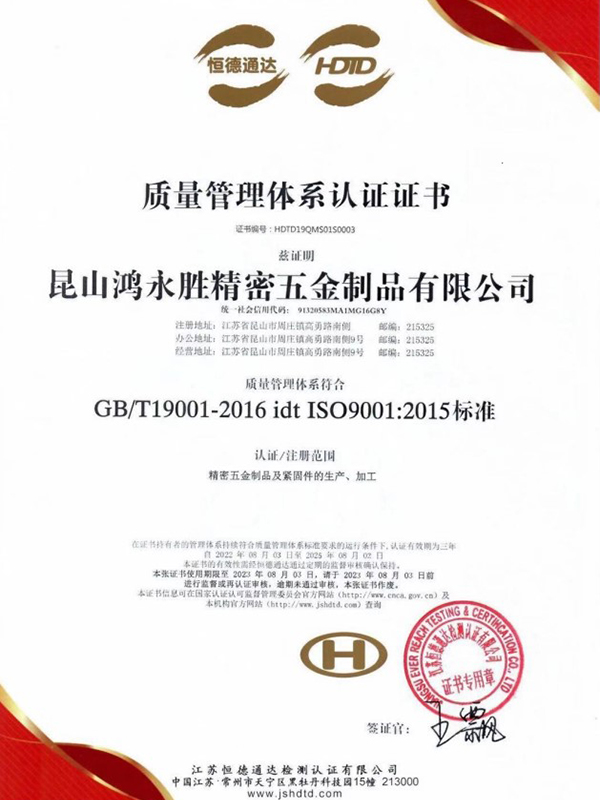Carbon Steel Bolt Supplier Guide: What Buyers Should Look For Selecting the right supplier for carbon steel bolts affects product performance, safety, and long-term cost. This guide breaks down the p...
READ MOREThe company has obtained two quality system management certificates of ISO9001:2015 and IATF16949:2016.
At present, the company has been for Japan, Sweden, the United States, Singapore, Malaysia, Hong Kong and the Pearl River Delta and many other customers to provide services, now the main customers are: Japan Sharp (SHARP), Japan SMC, Japan Panasonic (Panasonic), the Swedish automobile VOVOL, etc., all the fixed assets investment of more than 30 million dollars, welcome friends from all walks of life to the factory to visit, study, consulting and come! We welcome friends from all walks of life to visit our factory, investigate, consult and come to us for sample processing.
We are looking forward to establishing a good business partnership with you with mutual trust and reciprocity!
-
-
Introduction: The Foundation of Mechanical Systems In the intricate world of modern manufacturing and engineering, machined parts form the fundamental building blocks of virtually every mechanical sys...
READ MORE -
Why Structural Integrity Matters In construction, machinery, and other industrial applications, structural integrity is crucial for safety, performance, and longevity. One of the key elements in ensur...
READ MORE -
Introduction to Stainless Steel Fasteners Stainless steel fasteners are widely used in construction, machinery, and industrial applications due to their corrosion resistance and durability. Among them...
READ MORE
What manufacturing techniques are used to achieve the tight tolerances in high-security carbon steel lock cylinders?
Achieving tight tolerances in high-security carbon steel lock cylinders is crucial for ensuring their resistance to tampering and overall reliability. Several advanced manufacturing techniques are employed to attain these precise measurements:
Precision Machining:
CNC Machining: Computer Numerical Control (CNC) machines are used to precisely cut and shape the lock components to very tight tolerances. CNC machines can consistently produce parts with high precision, which is essential for high-security locks.
EDM (Electrical Discharge Machining): This technique uses electrical discharges to erode material from the lock components, allowing for extremely precise shaping and detailing, especially in hard-to-reach areas.
High-Precision Grinding:
Surface Grinding: This process ensures that the surfaces of the lock components are perfectly flat and smooth, which is crucial for maintaining tight tolerances.
Cylindrical Grinding: Used for round parts of the lock, this process ensures that the cylindrical components meet the exact diameter specifications required for a secure fit.
Laser Cutting:
Laser cutting provides high precision and control over the material removal process, allowing for intricate designs and tight tolerances that are difficult to achieve with traditional cutting methods.
Wire EDM:
Wire Electrical Discharge Machining (Wire EDM) is used to cut complex shapes and fine details in the lock components with exceptional precision. This technique is particularly useful for creating the intricate internal components of high-security carbon steel lock cylinders.
Heat Treatment:
Tempering and Hardening: These processes alter the physical properties of the carbon steel lock cylinder components, making them more durable and wear-resistant. Precise control over the heat treatment process ensures that the parts maintain their tight tolerances even after undergoing significant thermal stress.
Metrology and Inspection:
Coordinate Measuring Machines (CMM): These machines are used to measure the dimensions of lock components with high accuracy, ensuring they meet the required tolerances.
Optical Comparators: These devices project an enlarged image of the lock component onto a screen, allowing for precise measurement and inspection of its dimensions.
Laser Scanning: Laser scanners can create detailed 3D models of the lock components, which are then compared to the original CAD designs to ensure compliance with tolerance specifications.
High-Quality Materials:Using high-quality materials that have consistent properties is essential for achieving tight tolerances. Variations in material composition can lead to inconsistencies in the manufacturing process.
Quality Control Processes:
Statistical Process Control (SPC): This method involves monitoring and controlling the manufacturing process through statistical analysis, ensuring that the parts consistently meet the tight tolerances required.
Six Sigma: A set of techniques and tools for process improvement, Six Sigma aims to reduce variability in manufacturing processes, ensuring high precision and quality.
Advanced Software and Design Tools:
CAD/CAM Software: Computer-Aided Design (CAD) and Computer-Aided Manufacturing (CAM) software are used to create detailed designs and control the machining processes. These tools ensure that the designs are accurate and that the manufacturing process can replicate them precisely.
By utilizing these advanced manufacturing techniques, high-security carbon steel lock cylinders can achieve the tight tolerances necessary for superior security and performance.



 русский
русский Español
Español



